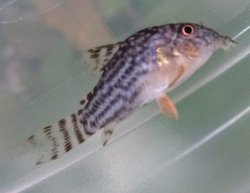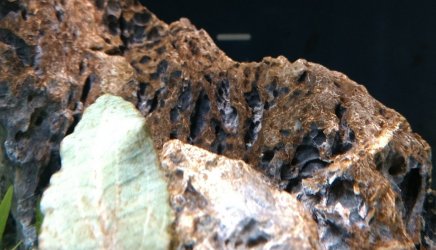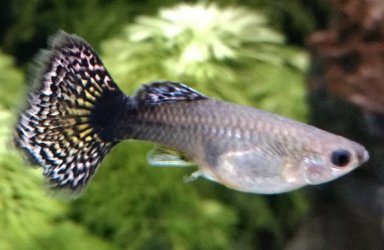This is going to be a bit epic so I apologise, but if you make it through, any advice would be appreciated.
Tank has been set up and cycling for several months now. We have added fish gradually during that time and currently have 5 guppies, 4 corys, 6 neons, 2 platies and a female swordtail.
The tank is 100l.
Levels each week have been 0 ammonia, 0 nitrites, and 10-20 for nitrates. Ph has been stable too at 7.6.
We are currently trying to tackle an outbreak of brown diatoms and have added an API Phoszorb bag as we had high phosphates. This went in on Monday just gone.
*
In late September we lost a female guppy. She became lethargic, went off food before ending up on her side nearly doubled over. Her fins also seemed a bit ragged around the edges.
Whilst she was going down hill we also had a bit of white poo from some of the other fish and saw some flashing. We used NTS antifluke and wormer medication for 2 weeks with decent water changes.
Since then poo has been more normal in colour and the flashing went away.
We added the 2 platies and the swordtail and had another couple of weeks of no issues.
*
This week we noticed several of the livebearers flashing again.
One guppy (who has had fry just over a week ago - we took them out the tank) has a bit of a ragged tail fin compared to the others. Other than that she is absolutely fine. She is the bossy one so I wonder if the others have just been nipping a bit?
One cory is definitely unwell. He has always had a bent fin but was very feisty. Over the last week or so he's been sitting wedged in a plant and listing slightly before he'll swim off like normal. He doesnt seem to have grown like the other corys and seems paler in colour. He has still been eating. Today he was on his side and looked quite poorly so I have popped him in a floating plastic tub to keep an eye on him as our other tank has fry in it. He swims around for a few minutes then goes back to listing on his side. This is similar behaviour to the way the female guppy was before she died.
Levels remain as stated before. 25% water change on Monday and we added the Phoszorb. On Tuesday I dosed with the antifluke and wormer again as that seemed to deal with the flashing last time. I also took the carbon filter out.
As newbies to this, Im wondering if anything else could be wrong?
- Could the diatoms (or their dying off due to the Phoszorb) cause irritation?
- Have we just been unlucky with the guppy and cory and have purchased 2 weaker fish or could it be a bigger issue?
- Should I be concerned about the ragged tale on the female guppy?
The plan is to set up another tank asap to move the one adult male guppy into so we can eventually stop getting fry. We plan to keep any male fry and the females will go to the LFS. Im very wary of moving the adult guppy into a new tank though if he's potentially got something.
Help!
Tank has been set up and cycling for several months now. We have added fish gradually during that time and currently have 5 guppies, 4 corys, 6 neons, 2 platies and a female swordtail.
The tank is 100l.
Levels each week have been 0 ammonia, 0 nitrites, and 10-20 for nitrates. Ph has been stable too at 7.6.
We are currently trying to tackle an outbreak of brown diatoms and have added an API Phoszorb bag as we had high phosphates. This went in on Monday just gone.
*
In late September we lost a female guppy. She became lethargic, went off food before ending up on her side nearly doubled over. Her fins also seemed a bit ragged around the edges.
Whilst she was going down hill we also had a bit of white poo from some of the other fish and saw some flashing. We used NTS antifluke and wormer medication for 2 weeks with decent water changes.
Since then poo has been more normal in colour and the flashing went away.
We added the 2 platies and the swordtail and had another couple of weeks of no issues.
*
This week we noticed several of the livebearers flashing again.
One guppy (who has had fry just over a week ago - we took them out the tank) has a bit of a ragged tail fin compared to the others. Other than that she is absolutely fine. She is the bossy one so I wonder if the others have just been nipping a bit?
One cory is definitely unwell. He has always had a bent fin but was very feisty. Over the last week or so he's been sitting wedged in a plant and listing slightly before he'll swim off like normal. He doesnt seem to have grown like the other corys and seems paler in colour. He has still been eating. Today he was on his side and looked quite poorly so I have popped him in a floating plastic tub to keep an eye on him as our other tank has fry in it. He swims around for a few minutes then goes back to listing on his side. This is similar behaviour to the way the female guppy was before she died.
Levels remain as stated before. 25% water change on Monday and we added the Phoszorb. On Tuesday I dosed with the antifluke and wormer again as that seemed to deal with the flashing last time. I also took the carbon filter out.
As newbies to this, Im wondering if anything else could be wrong?
- Could the diatoms (or their dying off due to the Phoszorb) cause irritation?
- Have we just been unlucky with the guppy and cory and have purchased 2 weaker fish or could it be a bigger issue?
- Should I be concerned about the ragged tale on the female guppy?
The plan is to set up another tank asap to move the one adult male guppy into so we can eventually stop getting fry. We plan to keep any male fry and the females will go to the LFS. Im very wary of moving the adult guppy into a new tank though if he's potentially got something.
Help!




